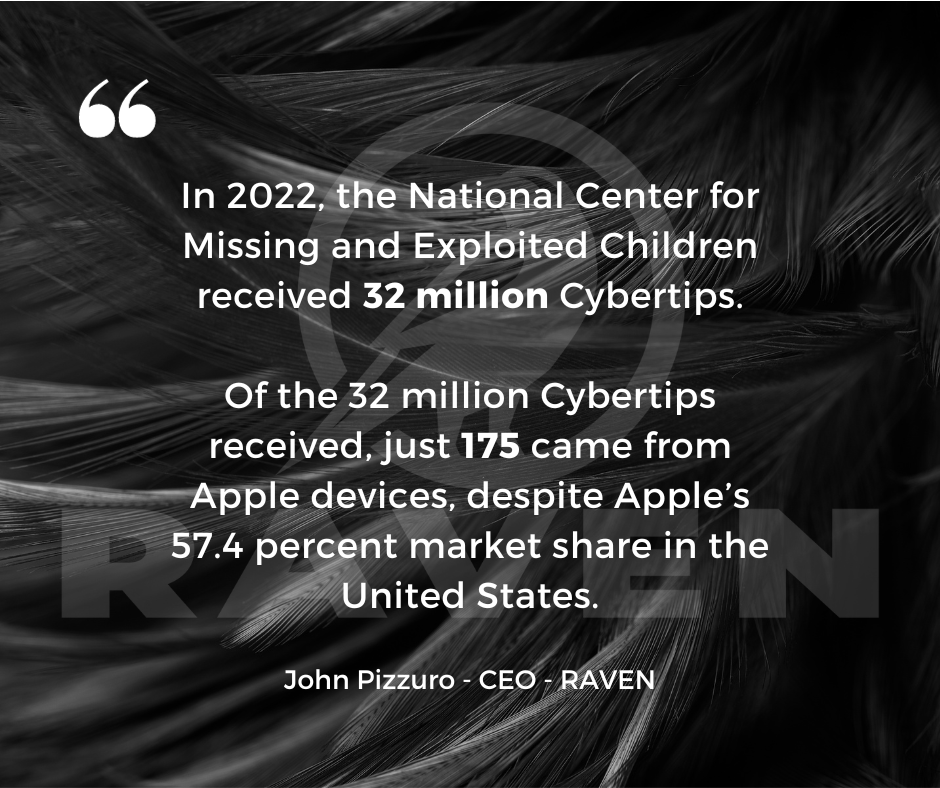Raven CEO, John Pizzuro, was published by The Hill on September 25th.
John explained how the rapid advancement of technology is putting our children at risk more than ever before and how legislation is woefully behind the technology revolution unfolding in front of our eyes. As a result, we and our children must depend on the woefully inadequate safety solutions the tech industry provides to protect us.
Algorithms prey on human psychology, making children even more susceptible to exploitation by these platforms and offenders. Artificial intelligence (AI) is making it easier for offenders to cosplay the behavior of children to infiltrate their lives, allowing them to groom children at scale. With poor moderation, the absence of age or identity verification, and inadequate or missing safety mechanisms, we are leaving our children unprotected.
With the ubiquity of cellphones and access to the internet, victims of sex trafficking and drugs are only getting younger. In 2008 there was an average of one computer per household; today families in the U.S. have an average of 20 internet-capable devices. The increase of cell phones and internet access and activity only means an exponential increase in the volume of data investigators must comb through to find victims.
Between 2012 and 2021 there was a 6,951 percent increase in tips related to online activity, forcing law enforcement agencies to become reactive. Most can no longer engage in the proactive operations that are designed to target the most dangerous offenders.

Additionally, according to several Internet Crimes Against Children Task Force commanders, due to the lack of quality and uniformity of the data tech companies report to NCMEC, only 5 percent of Cybertips result in arrests. The data investigators receive forces them to comb through in-actionable or incomplete information, distracting investigators from the most egregious offenders.
Our children’s risk for harm has increased at such a significant pace that shielding them from abuse and exploitation with the current resources available has become untenable. To quote a sentiment shared by thousands of experts in this space: “We cannot arrest our way out of this problem.” Even if it were a viable solution, the current landscape of legislation and resources to identify victims and offenders is already failing our law enforcement.
That’s why we need the help of our lawmakers.
Legislation in the Senate and House such as the Protect Our Children; Stop CSAM; Project Safe Childhood; Shield; Report; End Child Exploitation; Earn It; Child Online Safety Modernization; and Kids Online Safety acts should all become law, as part of a comprehensive approach to protecting our children in a rapidly changing environment.
Without Congress, we will continue to depend on tech companies, which are reducing their trust and safety teams, moving to end-to-end encryption and hiding behind Virtual Private Networks (VPNs). All of these measures have been voluntary — including what they share with the National Center for Missing & Exploited Children and law enforcement. It is not enough.
Our current approach to technology and protecting our children has failed. If Congress can’t come together in an act of bipartisanism to protect our children, what hope do we have?
You can read John’s full article here.


